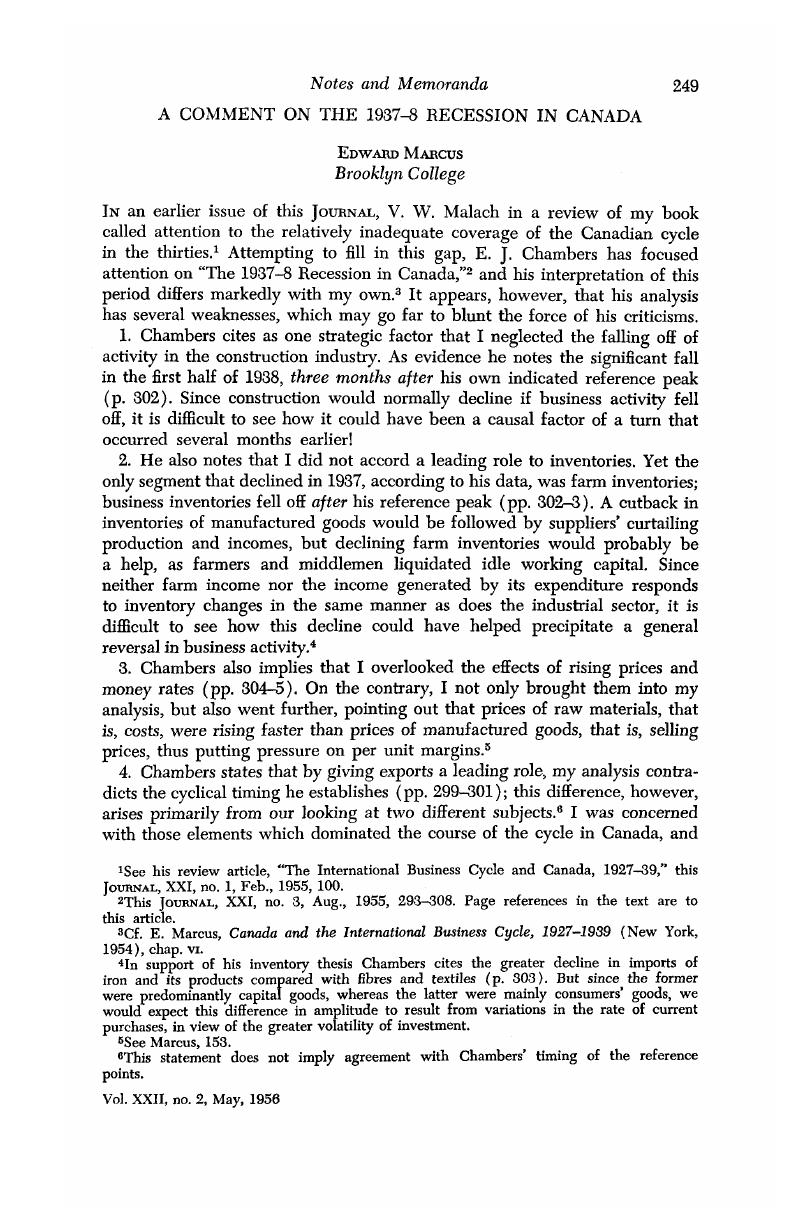No CrossRef data available.
Published online by Cambridge University Press: 07 November 2014

1 See his review article, “The International Business Cycle and Canada, 1927–39,” this Journal, XXI, no. 1, Feb., 1955, 100.
2 This Journal, XXI, no. 3, Aug., 1955, 293–308. Page references in the text are to this article.
3 Cf. Marcus, E., Canada and the International Business Cycle, 1927–1939 (New York, 1954), chap. VI.Google Scholar
4 In support of his inventory thesis Chambers cites the greater decline in imports of iron and its products compared with fibres and textiles (p. 303). But since the former were predominantly capital goods, whereas the latter were mainly consumers' goods, we would expect this difference in amplitude to result from variations in the rate of current purchases, in view of the greater volatility of investment.
5 See Marcus, 153.
6 This statement does not imply agreement with Chambers' timing of the reference points.
7 Cf. e.g., von Haberler, G., Prosperity and Depression (rev. ed., Geneva, 1938), 169 Google Scholar, and Burns, A. F. and Mitchell, W. C., Measuring Business Cycles (New York 1946), 148.Google Scholar
8 Indeed, this last element probably explains the “peaking” of Canadian stock prices early in 1937 (see Chambers, 305); is it pure coincidence that both exports and stock prices reached their peaks almost simultaneously?